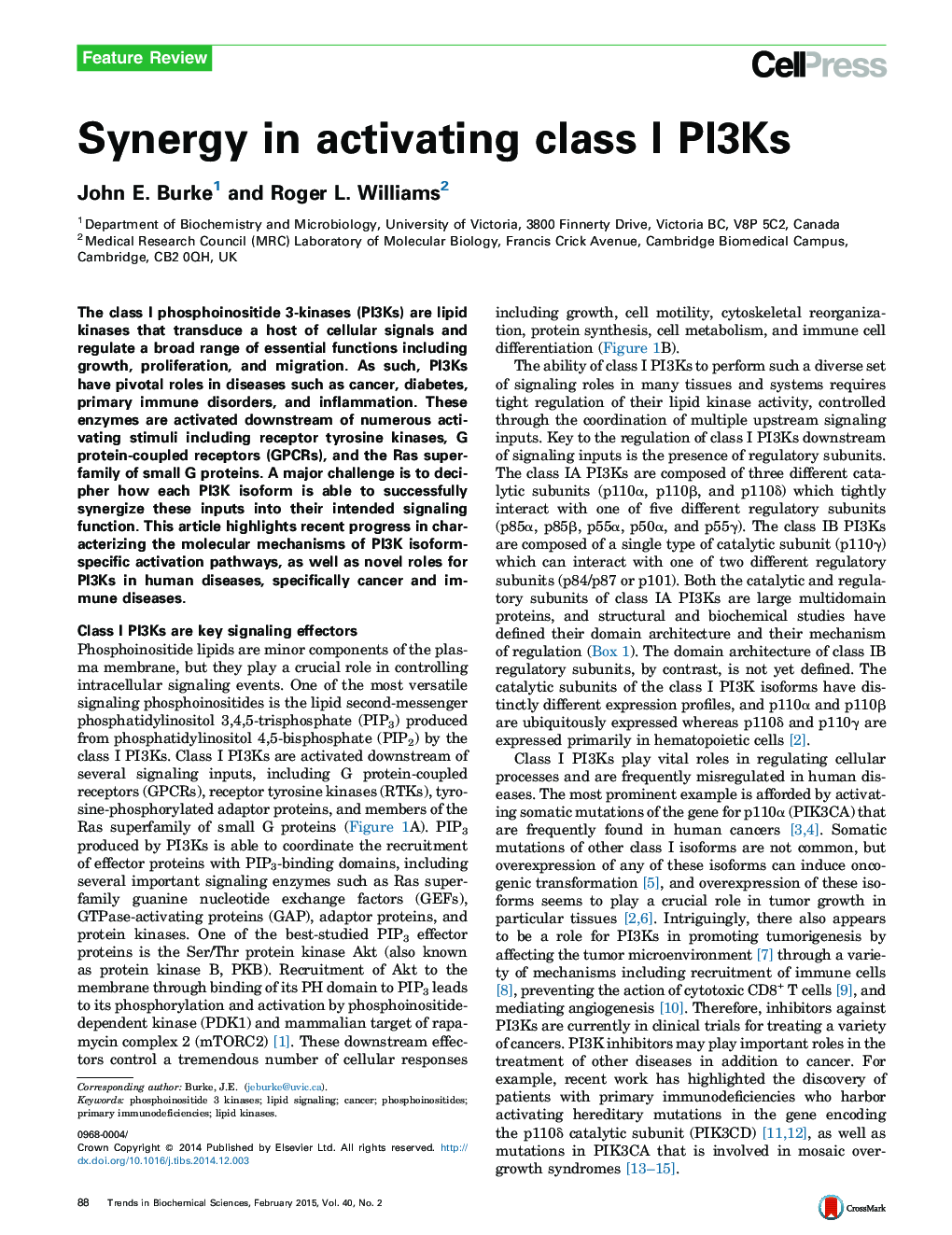| Article ID | Journal | Published Year | Pages | File Type |
|---|---|---|---|---|
| 2030575 | Trends in Biochemical Sciences | 2015 | 13 Pages |
•Input-selective mutations make apparent complex synergy in PI3K signaling.•Each class IA PI3K isoform has a different capacity to be activated by upstream inputs.•p110β is synergistically activated by inputs from RTKs, GPCRs, and Rac.•p110δ inhibitors may have broad utility in cancer therapies through immunomodulation.•Oncogenic mutations in PIK3CA and PIK3R1 promote growth through multiple mechanisms.
The class I phosphoinositide 3-kinases (PI3Ks) are lipid kinases that transduce a host of cellular signals and regulate a broad range of essential functions including growth, proliferation, and migration. As such, PI3Ks have pivotal roles in diseases such as cancer, diabetes, primary immune disorders, and inflammation. These enzymes are activated downstream of numerous activating stimuli including receptor tyrosine kinases, G protein-coupled receptors (GPCRs), and the Ras superfamily of small G proteins. A major challenge is to decipher how each PI3K isoform is able to successfully synergize these inputs into their intended signaling function. This article highlights recent progress in characterizing the molecular mechanisms of PI3K isoform-specific activation pathways, as well as novel roles for PI3Ks in human diseases, specifically cancer and immune diseases.
